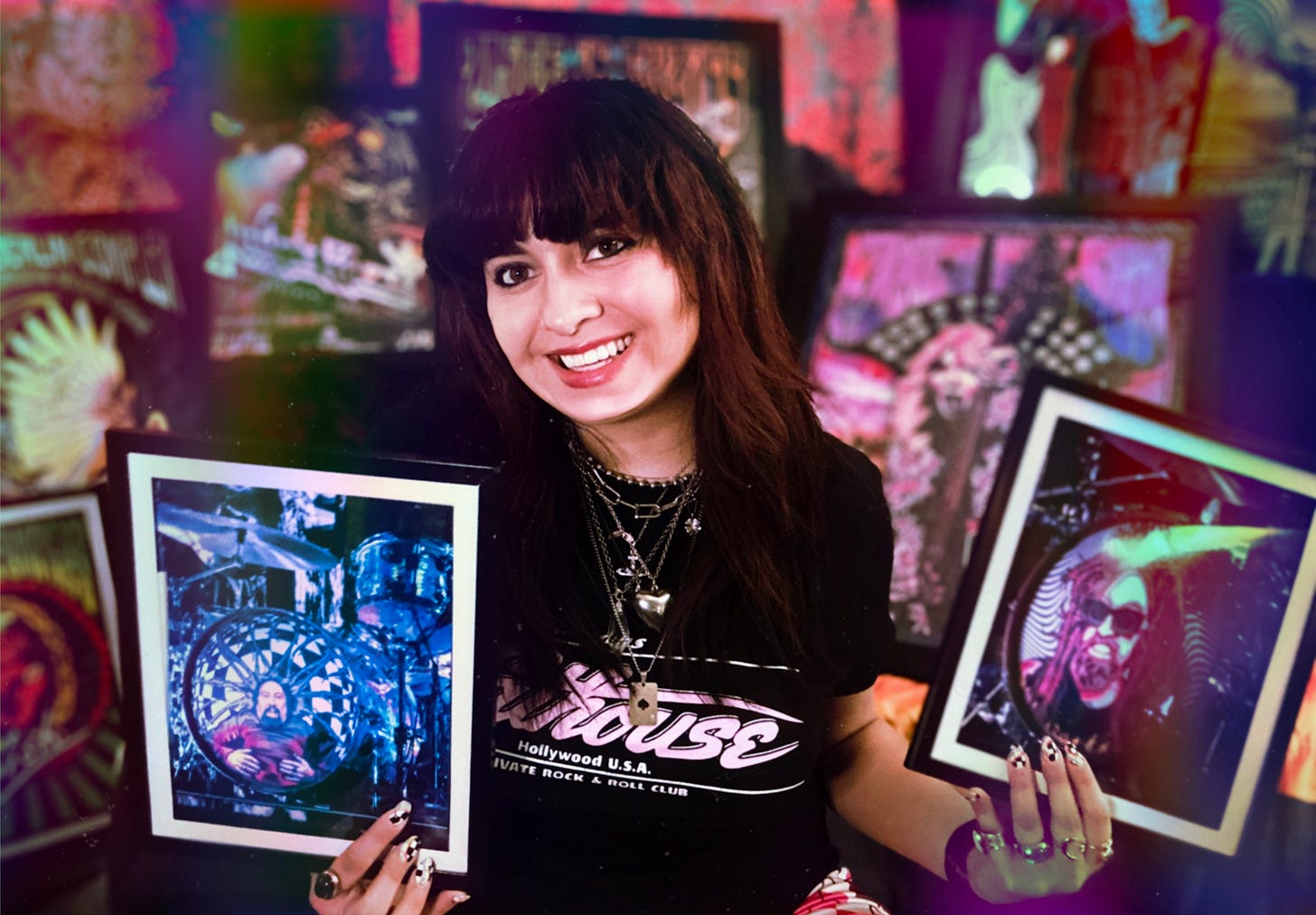CR 061: Karmann Sloane on the Art of Bringing Music to Life
The graphic artist known as Sketchy Goat discusses her work with some of music’s biggest names.
Karmann Sloane, who produces work under the name Sketchy Goat, is only a few years into her career. But what a career she’s had so far. Her colorful, psychedelic designs can be seen on merch, posters, drumheads, and album covers for some of music’s biggest acts, including Heart, “Weird Al” Yankovic, Billy Idol, Alice in Chains, Cyndi Lauper, and Mavis Staples. In fact, her very first client happened to be one of her favorite bands.
“It was the Smashing Pumpkins,” Sloane says. “No pressure. [Laughs] The Smashing Pumpkins’ admin is really wonderful, and she has a great eye for looking at fans drawing stuff online. I had done this psychedelic portrait of Billy [Corgan, lead singer] and it turned out they were putting together a psychedelic time capsule for the album Gish. The timing was perfect. They reached out to me and were like, ‘We want something in this style. Can you meet this deadline?’ And the answer is always ‘yes,’ for every…
Keep reading with a 7-day free trial
Subscribe to Creative Reverberations to keep reading this post and get 7 days of free access to the full post archives.



